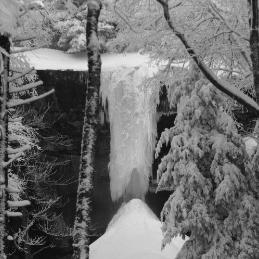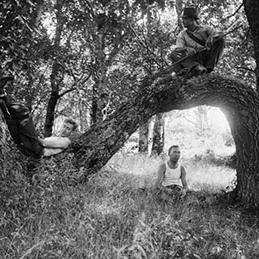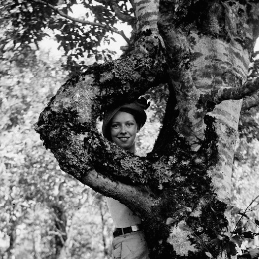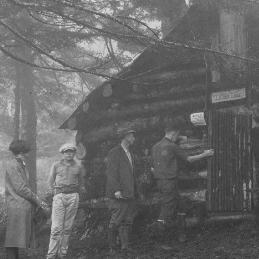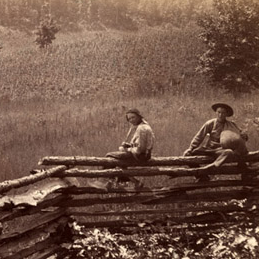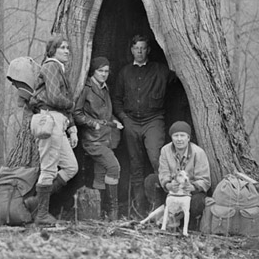Browse
Export 139 results:
Filters: First Letter Of Title is U [Clear All Filters]
"Utmost Disorder: The Capture of Brigadier General Robert Vance." Great Smoky Mountains Colloquy 13, no. 2 (2012): 1-2.
Utilizing Time Series Models and Spatial Analysis of Forecast Residuals for Tree Ring Analysis of Red Spruce In Analyses of Great Smoky Mountain Red Spruce Tree Ring Data. New Orleans, LA: U.S. Department of Agriculture, Forest Service, 1988.
UT, Smokies partner to restore American chestnut tree In The Daily Times. Vol. 2013. Blount County Publishers, 2012.
Using Stable Isotopes to Assess Longitudinal Diet Patterns of Black Bears (Ursus americanus) in Great Smoky Mountains National Park In Wildlife and Fisheries Science. Knonxville, TN: University of Tennessee, 2011.
"Using stable isotopes to assess dietary changes of American black bears from 1980 to 2001." Isotopes in Environmental & Health Studies 50, no. 3 (2014): 382-398.
"Using Silviculture to Influence Carbon Sequestration in Southern Appalachian Spruce-Fir Forests." Forests 3, no. 2 (2012): 300-316.
"Using Scenarios to Assess the Impact of Air Pollution in the Great Smoky Mountains National Park." Public Works Management & Policy 10, no. 2 (2005): 170-185.
Using Remotely Sensed Indices of Fire Severity and Vegetation Structure to Identify Patterns of Avian Occurrence Following Changes in Fire Management Policy within Great Smoky Mountains National Park In Zoology. Vol. Master of SCience. Raleigh, NC: North Carolina State University, 2015.
"Using Isozyme Polymorphisms for Identifying and Assessing Genetic Variation in Cultivated Pawpaw [Asimina triloba (L.) Dunal]." Journal of the American Society for Horticulture Science 122, no. 4 (1997): 504-511.
"On Using Horn's Markov
Succession Model." The American Naturalist 117, no. 4 (1981): 572-574.
"Using Heterozygosity to Estimate a Percentage DNA Sequence Similarity for Environmental Species' Delimitation Across Basidiomycete Fungi." New Phytologist 182, no. 4 (2009): 795-798.
Using GIS to Analyze the Precipitation Regime of the Great Smoky Mountains National Park, TN/NC In Plant and Soil Sciences. Knoxville, TN: University of Tennessee, 1995.
"Using Counts to Simultaneouslly Estimate Abundance and Detection Probabilities in a Salamander Community." Herpetologica 60, no. 4 (2004): 468-478.
"Using Citizen Scientists to Measure the Effects of Ozone Damage on Native Wildflowers." Science Scope 33, no. 8 (2010): 12-19.
"Using Benefit Transfer to Estimate Average Relative Marginal Values for Wildland Fire Program Planning." Journal of Sustainable Forestry 33, no. 4 (2014): 387-406.
Using 10-BE to Determine Sediment Production and Transport Rates on Steep Hillslopes in Varied Tectonic and Climatic Settings In Geology. Vol. Master of Science. Burlington, VM: University of Vermont, 2008.
USGS-NPS Vegetation Mapping Program: Vegetation Classification of Great Smoky Mountains National Park (Cades Cove and Mount Le Conte Quadrangles) In National Vegetation Classification - Southeastern United States. Chapel Hill, NC: The Nature Conservancy, 1999.
USGS Field Party., 1953.
"User Perception of Backcountry Management Policies at Great Smoky Mountains National Park." In Wilderness and Natural Areas in the Eastern United States: A Management Challenge, edited by David L. Kulhavy and Richard N. Conner, 223-228. Nacogdoches, TX: Stephen F. Austin State University, 1986.
"Use, Persistence, and Intensity: Patterns of Care for Children's Mental Health Across One Year." Community Mental Health Journal 35, no. 1 (1999): 31-46.
Use Patterns of Tubers, Waders, and Swimmers in the Great Smoky Mountains National Park In Social Research in National Parks and Wildland Parks. Gatlinburg, TN: U. S. Department of the Interior, National Park Service, Southeast Region, 1980.
"Use Patterns and Solitude Preferences of Shelter Campers in Great Smoky Mountains National Park, U.S.A." Journal of Environmental Management 38, no. 1 (1993): 43-53.
"Use of Wildland Fire in Great Smoky Mountains National Park." In Fire in Eastern Oak Forests: Delivering Science to Land Managers, Proceedings of a Conference; 2005 November 15-17; Columbus, Ohio, edited by Matthew B. Dickinson, 273. Newton Square, PA: U.S. Department of Agriculture, Forest Service, Northern Research Station, 2006.
Use of the Southern Appalachian MAB Model in Establishing Biosphere Reserves in China In First Annual Southern Appalachian Man and the Biosphere Conference. Gatlinburg, TN: Tennessee Valley Authority, 1990.
"Use of the Pellet Count Technique for Determining Densities of Deer In the Southern Appalachians." Proceedings of the Annual Conference of the Southeastern Association of Fish and Wildlife Agencies 34 (1980): 508-514.






